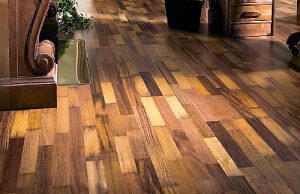ergonomics
Home-made furniture for home and garden
 Not so long ago, home-made furniture was in almost every home. With the disappearance of the deficit, interest in the products of craftsmen-furniture makers fell significantly, but in recent years it has revived. Moreover, home-made wood furniture with their own hands has become quite a popular hobby, which also brings tangible benefits, and also serves as the pride of the owner of the house.
Not so long ago, home-made furniture was in almost every home. With the disappearance of the deficit, interest in the products of craftsmen-furniture makers fell significantly, but in recent years it has revived. Moreover, home-made wood furniture with their own hands has become quite a popular hobby, which also brings tangible benefits, and also serves as the pride of the owner of the house.
Joiner or cabinetmaker?
DIY dining room furniture
Home-made furniture in the dining room
Representatives of these two professions were involved in furniture production. Joiners were entrusted with the production of simple and rough furniture: for example, stools, chairs without upholstery, benches and other furnishings with ordinary trim. Continue reading
How to restore old furniture yourself
 Not everyone can afford to buy new furniture, since for this a considerable investment should be made. And lining old furniture with modern materials is expensive. So is there a solution to the problem if the furniture already requires replacement, but there is no money for it? Alternatively, try to breathe new life into old furniture by restoring it, using budget materials, and a little more of your time and imagination. As a result, your experiments and your imagination will become a real masterpiece, and only you will have such an interior.
Not everyone can afford to buy new furniture, since for this a considerable investment should be made. And lining old furniture with modern materials is expensive. So is there a solution to the problem if the furniture already requires replacement, but there is no money for it? Alternatively, try to breathe new life into old furniture by restoring it, using budget materials, and a little more of your time and imagination. As a result, your experiments and your imagination will become a real masterpiece, and only you will have such an interior.
In order to restore old furniture yourself, you should adhere to some rules and recommendations.
Preparation of furniture for restoration Continue reading
Parquet board
 Flooring made from materials created by nature have been very popular and very popular for many years. The noble appearance, the relative ease of installation, the affordable price and the significant service life (with the proper daily care are quite significant) made the parquet board a favorite among all the most popular flooring today.
Flooring made from materials created by nature have been very popular and very popular for many years. The noble appearance, the relative ease of installation, the affordable price and the significant service life (with the proper daily care are quite significant) made the parquet board a favorite among all the most popular flooring today.
An undoubted advantage of a parquet board is its environmental friendliness, beauty, as well as a significant area of the board, which significantly reduces the time spent laying parquet boards and improves the quality of the resulting surface.
This unique material appeared not so long ago, in the forties of the twentieth century. An official patent was notarized in 1941 in Sweden. The technology has only been improved since then, but its operational properties have not become worse at all, rather the opposite. Continue reading



